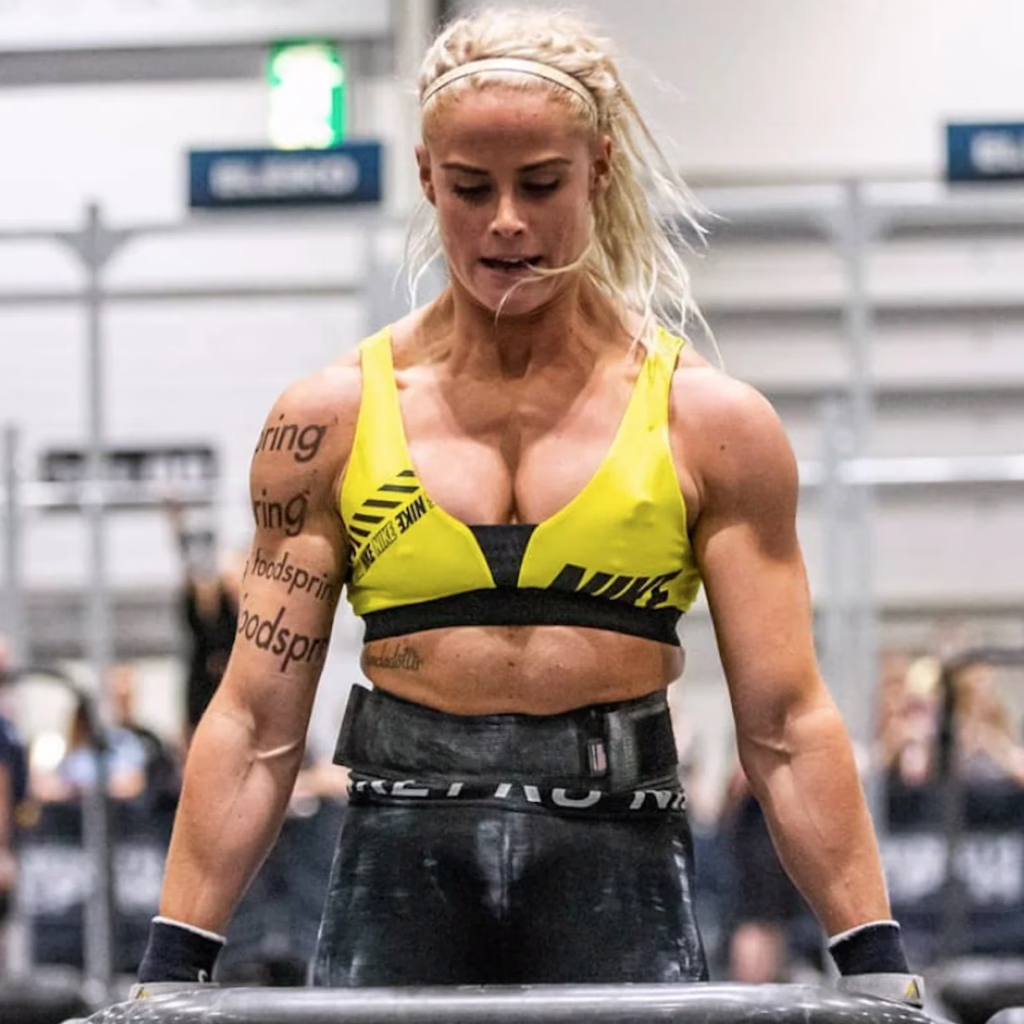CrossFit Legends have captivated the fitness world by pushing the boundaries of human performance. These elite athletes are the heroes of the CrossFit Games, dominating competitions and inspiring millions to chase new personal records. From multi-time champions to pioneers who popularized the sport, CrossFit Legends like Rich Froning, Mat Fraser, Tia-Clair Toomey, and Annie Thorisdottir have transformed CrossFit into a global phenomenon. Their stories of grit and resilience motivate countless gym-goers and offer valuable lessons in dedication. In this article, we’ll celebrate these CrossFit Legends, explore how they achieved legendary status, highlight the coaches and figures who shaped the sport, and share tips on training like a CrossFit legend. Let’s dive into the world of CrossFit’s iconic figures.
Table of Contents
CrossFit Legends: Icons of the Sport’s History
What makes an athlete a CrossFit Legend? In CrossFit’s explosive history, a “legend” is an athlete who has achieved extraordinary success at the CrossFit Games or significantly influenced the sport’s development. These athletes consistently finish on the podium and set unprecedented records. They have not only earned the title of “Fittest on Earth” multiple times but have also redefined fitness standards. Early on, the CrossFit Games were a small gathering. Thanks to legends like those below, the Games exploded into a global spectacle. Let’s meet some of the most legendary athletes and see how each left their mark on the sport.
Rich Froning Jr. – The Original CrossFit Icon
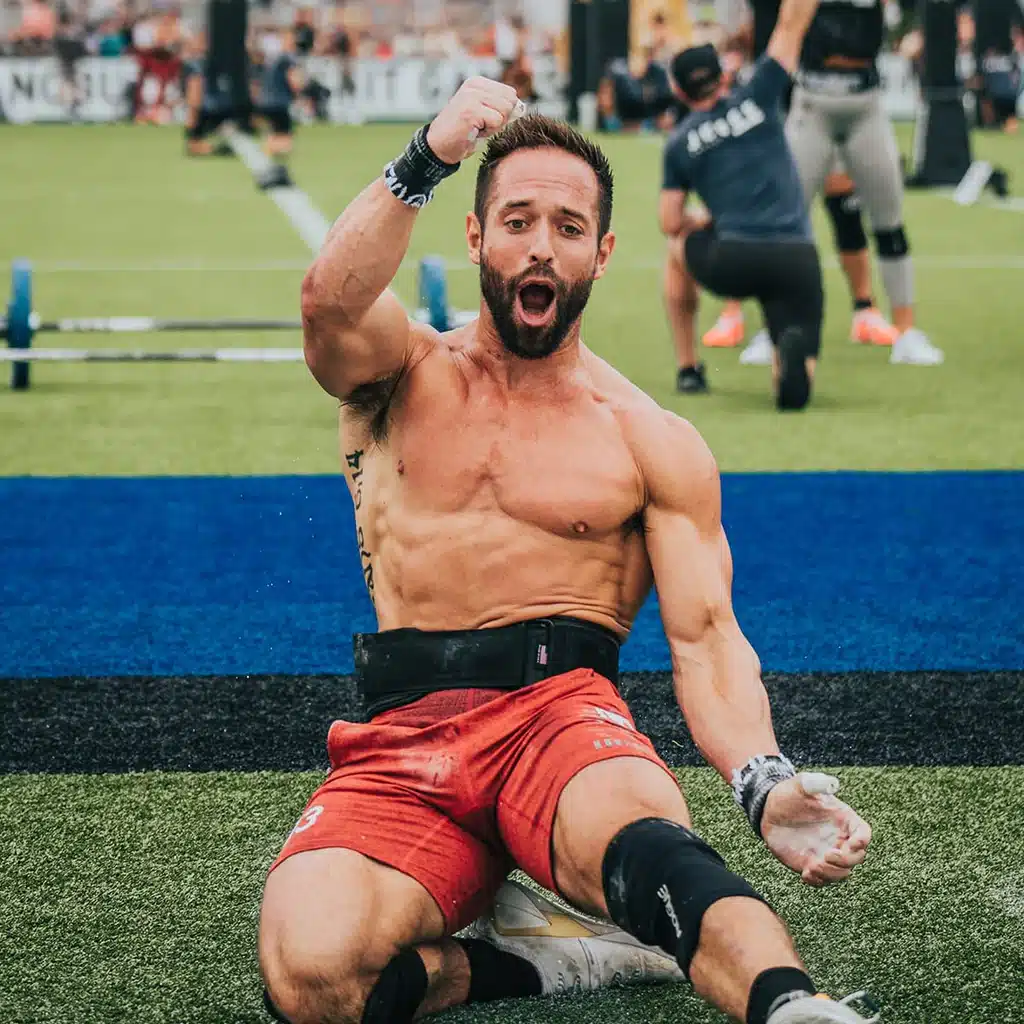
Rich Froning Jr. is often referred to as the sport’s first superstar. He set the bar for all who followed by winning the CrossFit Games four consecutive times from 2011 to 2014. His dominance and humble, team-focused attitude inspired a generation of athletes to dream big. Froning was known for his incredible endurance and well-rounded skills, powering through heavy lifts, high-intensity metcons, and technical gymnastics. After his individual competition streak, Rich transitioned to team competition, leading his team to multiple championships. This adaptability solidified Froning’s status as a CrossFit Legend. Athletes and fans view him as a founding hero of CrossFit’s competitive era.
Mat Fraser – The Dominant Champion
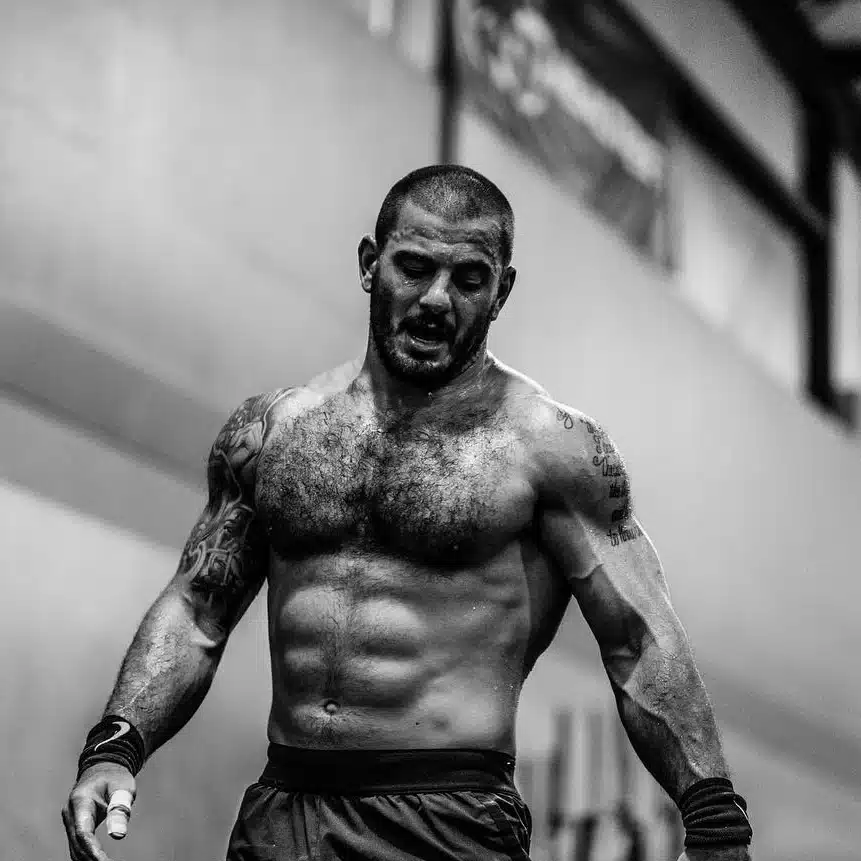
If Froning established the benchmark, Mat Fraser took it to a whole new level. Known as “the Dominator,” Fraser is one of the greatest athletes, winning five straight CrossFit Games from 2016 through 2020. He redefined competitive CrossFit with a relentless drive and focus. Fraser’s training regimen was legendary, featuring grueling sessions, meticulous nutrition, and exceptional mental toughness. His dominance earned him comparisons to Michael Jordan and Tom Brady. By winning five consecutive titles, Fraser cemented his legacy and raised the ceiling for what athletes could achieve.
Tia-Clair Toomey-Orr – The Fittest Woman in History
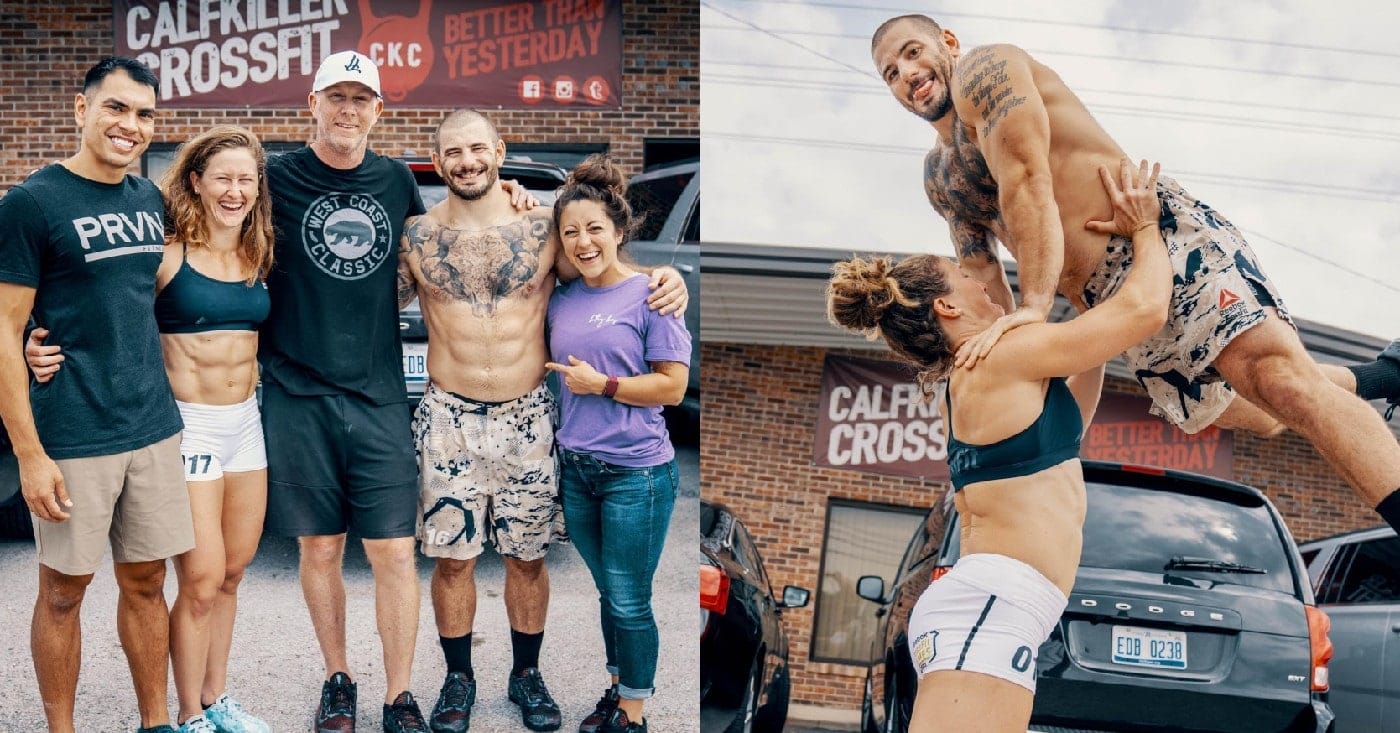
No discussion of CrossFit Legends is complete without Tia-Clair Toomey-Orr, the most decorated female athlete in history. Tia-Clair’s journey began with runner-up finishes but soon ascended to new heights, dominating the women’s division with a record six consecutive championships. Her versatility is unmatched, showcasing complete fitness across strength, endurance, skill, and mental fortitude. Beyond her physical prowess, Tia’s sportsmanship and humility have made her a beloved figure, inspiring countless athletes to pursue excellence.
Annie Thorisdottir – The Pioneering Champion
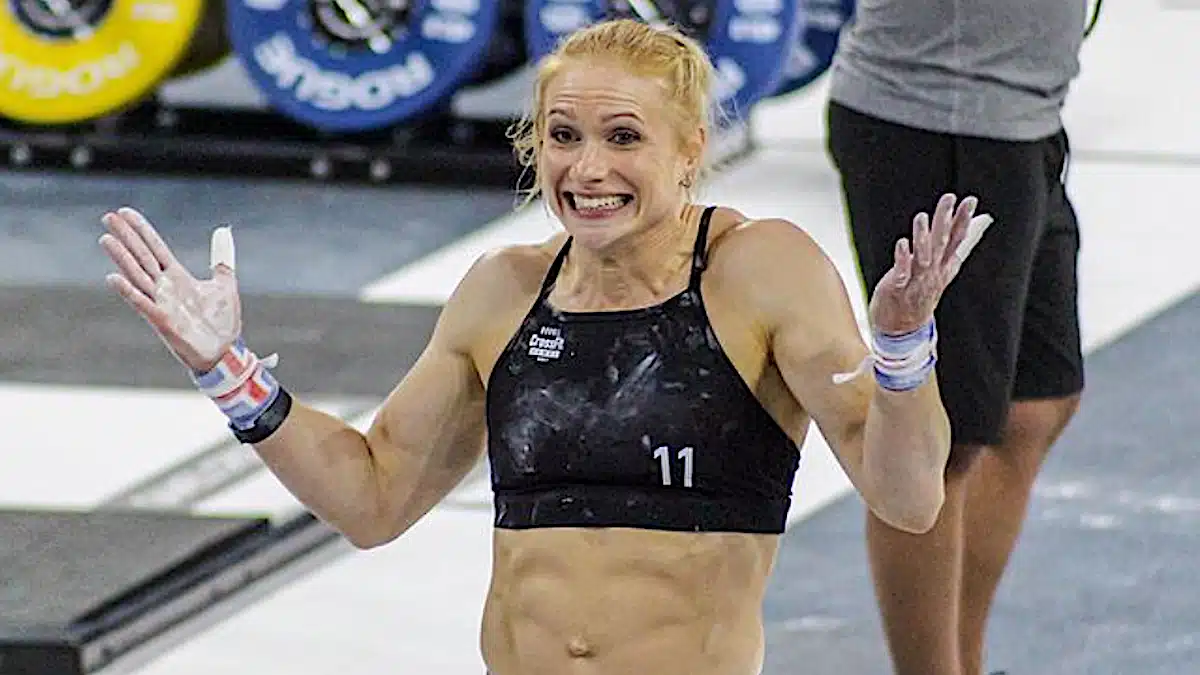
Hailing from Iceland, Annie Thorisdottir is a CrossFit Legend who pioneered women’s success in the sport. Annie became the first woman to win the CrossFit Games twice, earning back-to-back championships. Her resilience and incredible work ethic helped put international athletes on the CrossFit map. After facing setbacks, including a severe back injury, Annie returned strong, proving her longevity and determination. She exemplifies the well-rounded CrossFit athlete, capable of competing at a high level and mentoring others.
Other CrossFit Legends and Icons
While the athletes above are often first mentioned, there are several other CrossFit Legends and iconic figures who have left their mark on the sport:
- Katrín Tanja Davíðsdóttir – Another Icelandic superstar, Katrín won the CrossFit Games twice (2015 and 2016) in dramatic fashion (5 Greatest CrossFit Athletes Of All Time (Ranked & Reviewed)). She became a legend by staging a comeback – after failing to qualify for the 2014 Games, Katrín rededicated herself to training, moved to the U.S. to train under coach Ben Bergeron, and then earned back-to-back “Fittest Woman on Earth” titles. Her story of resilience and mental focus (detailed in her book Dottir) makes her an inspiration to many. Katrín’s athleticism and grace under pressure solidify her status as a CrossFit icon.
- Ben Smith – The model of consistency, Ben Smith competed at the CrossFit Games for 10+ consecutive years. He reached the podium multiple times and was crowned champion in 2015 (5 Greatest CrossFit Athletes Of All Time (Ranked & Reviewed)), proving that persistence pays off. Ben is often cited as a CrossFit Legend for his longevity in the sport – competing (and excelling) against different “eras” of athletes from the Froning years through the Fraser years. His humble demeanor and workhorse attitude earned him great respect in the community.
- Jason Khalipa – The 2008 CrossFit Games champion, Jason was one of the original firebreathers of CrossFit. He famously won the second-ever Games as a young unknown, then went on to podium again in later years and win the Spirit of the Games award. Khalipa’s all-out effort in every workout (the man was known for his pain tolerance in brutal WODs) and later entrepreneurship in the fitness industry make him a legendary figure. Many remember Jason for his thrilling come-from-behind event wins and his role in expanding CrossFit globally (through his own gym brand NC Fit).
- Samantha “Sam” Briggs – Sam Briggs, the 2013 Fittest Woman on Earth, is a legend particularly for her engine and longevity. Known as “The Engine” for her incredible endurance, Briggs won the 2013 Games with performances that left many younger competitors in the dust, especially on aerobic events. What makes Sam truly legendary is that she continued to compete at a high level into her late 30s and even 40s, eventually becoming a Masters champion in 2022. Her work ethic (often doing extra endurance training like triathlons for fun) and no-excuses attitude resonate with athletes worldwide.
- Justin Medeiros – One of the newer names making a case for future legend status, Justin Medeiros won the CrossFit Games in 2021 and 2022, becoming the youngest male champion. With his trademark mullet haircut and a fearless approach to competition, Justin is often seen as the “next Fraser” in the making. While it’s early in his career, his back-to-back titles already place him among the greats. If he continues this level of performance, he could well become one of the next CrossFit Legends to break records.
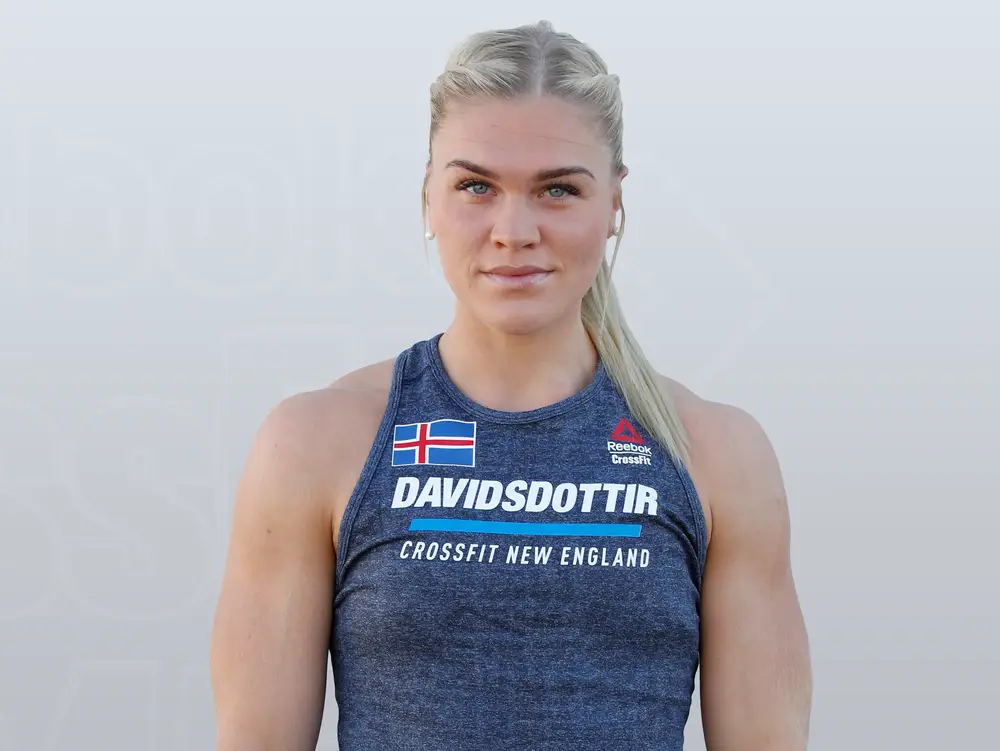
These athletes, among others, have helped shape CrossFit’s competitive landscape. Each brought their own flavor – whether it was Khalipa’s raw power, Briggs’ endurance, or Katrín’s mental tenacity – and each has a place in CrossFit lore. Together, the accomplishments of all these CrossFit Legends show the evolution of the sport: as training methods improved and the field grew more competitive, champions had to continuously raise the bar. And raise it they did.
In the end, the story of CrossFit Legends isn’t just about trophies. It’s about the relentless pursuit of personal excellence and the community that supports it. Keep training hard, recover well, and never lose passion – that’s the recipe that made ordinary people into CrossFit Legends.
Train Like a CrossFit Legend: Gear, Recovery, and Supplements
One thing that sets CrossFit Legends apart is how they approach training and recovery. To train like a CrossFit legend, you’ll need dedication—and the right tools. Here are some key aspects:
- Top-Tier Equipment: CrossFit champions rely on high-quality gear to support their intense training. The official equipment of the CrossFit Games is supplied by Rogue Fitness, and it’s no coincidence that many legends train with Rogue Fitness gear. From sturdy barbells and bumper plates to rig systems and conditioning machines, using reliable equipment allows athletes to push their limits safely. For example, a durable weightlifting bar and bumper plates let you drop heavy weights after a PR lift without worry, and a quality pull-up rig can support high-rep gymnastics work. Aspiring athletes often invest in gear that the pros use – whether it’s a Rogue power rack for heavy squats or a Concept2 rower for those killer endurance pieces. (If you’re outfitting your home gym like a legend, you might also check out GetRX’d for competitively priced functional fitness equipment.) The bottom line: having the right equipment can make a noticeable difference in training, enabling you to train harder and more efficiently. As one CrossFit Angier guide notes, even something as simple as good hand grips can be a game-changer by protecting your hands and boosting your grip in high-rep WODs (Blog – CrossFitAngier).
- Smart Recovery Tools: CrossFit Legends treat recovery with as much importance as training. After all, it’s the ability to bounce back day after day that allows them to train at insane volumes. You’ll often see top athletes using foam rollers, massage guns, compression boots, and kinesiology tape to speed up recovery and prevent injury. In fact, consistent, quality sleep is one of the “secret weapons” of legends – champions like Fraser and Froning emphasize getting enough sleep to ensure muscle regeneration and hormonal balance (5 Greatest CrossFit Athletes Of All Time (Ranked & Reviewed)) (5 Greatest CrossFit Athletes Of All Time (Ranked & Reviewed)). Many also take advantage of mobility tools (like Rogue mobility bands, foam rollers, etc.) and practices such as yoga or active stretching to improve flexibility and reduce soreness. The takeaway for an aspiring CrossFit legend: listen to your body. Incorporate rest days, quality sleep, and recovery modalities into your routine so you can keep training hard. As the saying goes, CrossFit Legends don’t just work hard – they also work smart by prioritizing recovery.
- Nutrition and Supplements: Elite CrossFit athletes fuel their bodies like high-performance machines. A balanced diet rich in lean protein, quality carbohydrates, and healthy fats is fundamental, but CrossFit Legends often go further, dialing in timing (such as post-workout nutrition) and supplementation. Common supplements in a top athlete’s regimen might include whey protein (for muscle repair), omega-3 fish oils (for inflammation reduction), magnesium (for muscle function and sleep), and vitamin D. One supplement widely used and researched is creatine monohydrate – known to boost strength and power. In fact, creatine is considered a “game-changer” for CrossFit athletes looking to enhance strength, endurance, and recovery (10 Proven Benefits Of Creatine For CrossFit) (10 Proven Benefits Of Creatine For CrossFit). Many champions include creatine in their stack to squeeze out extra reps and improve recovery between intense workouts. Additionally, some advanced supplements have gained popularity for recovery and longevity. For instance, NAD+ boosters (which support cellular energy production) are being explored by athletes to aid in recovery and performance. (NAD+ is involved in hundreds of cellular reactions, and increasing NAD+ levels via supplements can yield benefits for energy and anti-aging (Elite-Bio: Hormone and Aesthetic Solutions).) Other specific nutrients like 5-MTHF (methylfolate) are used by athletes who have particular nutritional needs, ensuring their bodies can perform at peak capacity. CrossFit Angier has covered how getting the right kind of folate (for those with genetic quirks) can improve energy and recovery, underlining that even vitamins can play a role in performance. The key point: fueling like a legend means both eating whole foods and leveraging proven supplements to cover all your bases. Always choose high-quality, tested supplements – for example, products from trusted providers like Thorne or EliteBio’s medical-grade supplements – to ensure you’re getting effective nutrition without banned substances.
- Mindset and Programming: The less tangible but equally important part of training like a CrossFit Legend is mindset. Champions approach workouts with a strategic mindset – they know when to push all-out and when to pace, how to stay calm under pressure, and how to adapt on the fly. Many legends work closely with knowledgeable coaches to plan their programming. Following a well-designed training program (often periodized to build strength in the off-season, then focused on metabolic conditioning and skills as competition nears) is essential. If you’re training on your own, consider following programs created by former Games athletes or proven coaches. And never underestimate the power of the community – training alongside others who push you, or under a coach who can provide feedback, often elevates your game. Every CrossFit Legend had training partners, coaches, or a community driving them. In your case, joining a local CrossFit box or finding a skilled coach can provide structure and motivation. As CrossFit Angier’s philosophy highlights, expert coaching and a supportive community can help anyone unleash their inner athlete and perhaps find their own path to greatness.
By focusing on quality equipment, diligent recovery, proper nutrition, and a champion’s mindset, you might not become a Games champion overnight, but you’ll certainly be training in the footsteps of the CrossFit Legends. Remember, even the greats started as beginners – it’s the consistency and dedication over years that turned them into legends.
The Coaches and Figures Who Shaped CrossFit’s Legends
Behind every group of CrossFit Legends, there are visionary coaches and figures who helped shape the sport. CrossFit grew through the efforts of its founder and passionate promoters. Here are key figures and their influence on CrossFit:
- Greg Glassman (CrossFit Founder): Greg Glassman, often called “Coach Glassman,” is the founder of CrossFit and the architect of its core principles. In the early 2000s, Glassman developed the CrossFit methodology – constantly varied functional movements performed at high intensity – and opened the first CrossFit gym in Santa Cruz, California. His training ideology, published through the CrossFit Journal, challenged conventional fitness routines and emphasized measurable, scalable results. Glassman’s vision created the playing field on which all CrossFit Legends would eventually test themselves. In 2007, when Dave Castro invited him to a ranch in Aromas for a friendly fitness throwdown (CrossFit Games – Wikipedia), Glassman supported the idea – this became the inaugural CrossFit Games. Without Glassman’s creation of CrossFit as a sport and community, athletes like Froning or Toomey would never have had the stage to become legends. Although Glassman later stepped away from the company (amid controversy in 2020), his impact on the CrossFit world remains foundational. He proved that a new approach to fitness could not only revolutionize how people train but also create a brand-new arena of competition.
- Dave Castro (CrossFit Games Director): If CrossFit’s founder built the house, Dave Castro designed the gladiator arena inside it. A former Navy SEAL, Castro served as the director of the CrossFit Games from its inception in 2007 all the way through 2021. He was the mastermind behind the grueling and often secretive Games events each year. Castro’s programming philosophy was simple: find the fittest on Earth by testing everything. From the infamous sandbag carries in a tennis stadium to ocean swims, odd-object cleans, and marathon rows, Dave Castro kept athletes (and fans) guessing about what challenge would come next. This constant innovation meant CrossFit Legends had to be adaptable and well-rounded; to win, they truly had to be ready for “the unknown and unknowable.” Castro’s role in shaping the legends is immense – he’s the person who threw every possible curveball at them, forcing athletes to evolve. When you hear Rich Froning talk about handling pressure or Tia Toomey mastering a new skill, often it was because Castro’s Games events demanded it. Under his direction, the CrossFit Games grew from a backyard test to a professional sport with global spectators. In essence, Dave Castro helped forge legends by creating the crucible in which they were tested year after year.
- Influential Coaches (Ben Bergeron, Shane Orr, etc.): Many CrossFit Legends credit their coaches for refining their talent into championship form. For instance, Ben Bergeron is a renowned coach who guided Katrín Davíðsdóttir to her two championships and also worked with Mat Fraser early in his career. Bergeron emphasized mindset as much as physical training – his mantra of “Championship Behaviors” (focusing on effort, attitude, and mindset) helped athletes handle the high-pressure Games environment. Shane Orr, husband and coach to Tia-Clair Toomey, created a training environment that allowed Tia to excel in multiple domains (even training for bobsled in the offseason!). He carefully planned her progression and peak for each Games, contributing hugely to her six titles. Another example is Mike Burgener, a weightlifting coach who, while not a CrossFit coach per se, had a huge impact through the CrossFit Weightlifting seminars – he taught thousands of CrossFitters (including Games athletes) how to properly snatch and clean & jerk, skills which became crucial in competition. These coaches and others working behind the scenes provided the programming, technique work, and moral support that allowed legends to shine. CrossFit Legends often say that while it’s an individual competition, it’s a team effort to get to the top. Without skilled coaches to strategize event pacing, tailor training to address weaknesses, and keep the athlete’s head in the right place, some champions might never have reached their full potential.
- Community Builders and Early Adopters: CrossFit’s growth was also propelled by early influential figures who might not themselves be Games champions but created the ecosystem for legends to emerge. Nicole Carroll (one of CrossFit’s first trainers and Director of Training) helped formalize Level 1 certifications, spreading quality coaching worldwide. The media team in the early days (several passionate individuals at CrossFit HQ) created documentaries and highlight videos that turned Games athletes into stars, bringing attention to people like Froning and Fraser. Affiliates (local CrossFit gyms) around the world hosted competitions and Open events that nurtured future talent. Even equipment manufacturers like Bill Henniger of Rogue Fitness can be seen as key figures – Rogue’s commitment to supporting the Games with top-notch gear allowed the competition to include heavier and more diverse events, thus advancing the sport. In short, the CrossFit Legends we admire stand on the shoulders of a whole network of contributors to the CrossFit community. It’s this community – coaches, organizers, fellow athletes, and fans – that continually raises the bar and supports the legends in their pursuit of excellence.
By understanding these figures, we see that CrossFit Legends did not rise in isolation. The sport of CrossFit is like a forge, and the athletes have created a rich history and community that continues to produce new legends. Appreciating this lineage is vital for anyone aspiring to be a great CrossFit athlete.
FAQ: CrossFit Legends
Q: Who is considered the greatest CrossFit legend of all time?
A: Debating the greatest CrossFit athlete of all time can be subjective, but most fans narrow it down to a few of the top legends. On the men’s side, Rich Froning Jr. and Mat Fraser are widely recognized as the greatest male CrossFit athletes (5 Greatest CrossFit Athletes Of All Time (Ranked & Reviewed)) – Froning dominated early with 4 straight titles, and Fraser raised the bar with 5 straight. For the women, Tia-Clair Toomey-Orr has set herself apart with an unprecedented 6 consecutive titles, making her arguably the most dominant CrossFitter in history (Tia-Clair Toomey-Orr and Justin Medeiros Win 2022 CrossFit Games). Each of these athletes is a CrossFit Legend in their own right. Some might give the edge to Tia now (due to total titles), while others point out Mat Fraser’s incredible margins of victory or Rich Froning’s role as a pioneer. In truth, all three – Rich, Mat, and Tia – are often referred to as the “GOATs” (Greatest of All Time) of CrossFit. They each defined their era.
Q: Which CrossFit legend has the most CrossFit Games wins?
A: Tia-Clair Toomey-Orr holds the record for the most CrossFit Games individual championship wins. She has 6 titles (2017, 2018, 2019, 2020, 2021, 2022) (Tia-Clair Toomey-Orr and Justin Medeiros Win 2022 CrossFit Games), which is the all-time high for any athlete. Mat Fraser is next with 5 titles on the men’s side (2016–2020) (5 Greatest CrossFit Athletes Of All Time (Ranked & Reviewed)). Prior to Fraser, Rich Froning held the record with 4 straight wins (2011–2014) (5 Greatest CrossFit Athletes Of All Time (Ranked & Reviewed)). It’s worth noting that these legends often continue to contribute to the sport even after retiring from individual competition – for example, Froning added team championships to his resume, and Tia has hinted at a comeback after starting a family. But strictly in terms of individual Games victories, Tia-Clair Toomey stands at the top with six, making her the most decorated CrossFit legend to date.
Q: How do CrossFit legends train to be so good at everything?
A: CrossFit Legends are renowned for their ability to excel across a wide range of physical tests – strength, endurance, gymnastics skills, and more. Their training is typically very intense and carefully structured. Generally, a CrossFit Games champion trains multiple times a day, often 5–6 days a week. A day’s training for a legend might include a heavy lifting session (to build strength in movements like squat, deadlift, press), a high-intensity metcon (to build engine and the ability to handle metabolic stress), a skill or accessory session (to practice things like handstand walks, muscle-ups, or odd objects), and possibly an extra conditioning piece (like a long run, swim, or row). They periodize their training through the year: in the off-season focusing on strength and skill development, and as the Games season approaches focusing on combining skills and building competition-style workouts. Another hallmark is volume – top athletes accumulate a lot of volume in key movements. For instance, a legend might do Olympic lifts almost daily (some days heavy, some days light technique work) to ingrain efficiency. They also make it a point to train weaknesses. If an athlete struggles with, say, swimming, you can bet they’ll spend months practicing in the pool so that when an event comes (as it often does, thanks to Games Director creativity), they can hold their own. Mental training is also part of it: many champions simulate competition scenarios in training (practicing unknown workouts, performing with little info or under fatigue) to prepare for the unpredictability of the Games. On top of that, recovery (sleep, nutrition, mobility) as discussed earlier, is a huge part of how they can sustain such training. Simply put, CrossFit legends train like professional athletes – because they are! They treat training, eating, and recovering as their full-time job.
Q: Do CrossFit legends follow a special diet?
A: While each athlete has their personal preferences, most CrossFit Legends follow nutrition plans that are dialed in for performance and recovery. A common approach is the Zone Diet or macro-counting, ensuring a balance of protein, carbs, and fats tailored to their needs. For example, they eat plenty of lean proteins (chicken, fish, eggs, etc.) to repair muscles, complex carbs (sweet potatoes, rice, oatmeal) to fuel training, and healthy fats (avocado, nuts, olive oil) to support recovery and hormone function. Many top athletes eat 5-6 smaller meals a day or time their nutrient intake around workouts (e.g., a protein-carb shake right after training to kickstart recovery). Hydration is also critical; during competition training, they consume electrolytes to replace what they lose in sweat. Some legends have unique quirks: Mat Fraser famously loved drinking whole milk and eating Snickers bars early in his career (though he cleaned that up in later years), and Rich Froning was known to favor peanut butter and jelly sandwiches as fuel. But overall, the trend has been towards cleaner, quality foods in sufficient quantity to maintain energy across multiple daily sessions. Additionally, many work with nutritionists to dial in specifics – for instance, Tia-Clair Toomey once mentioned upping her caloric intake when she realized she wasn’t eating enough for her training load. They also use supplements to fill any gaps (e.g., protein powder, BCAAs, and creatine as mentioned). Importantly, CrossFit Legends avoid junk food and excessive sugar on a regular basis, reserving treats for the occasional cheat meal. During competition week, they stick to familiar foods that they know won’t cause any digestive issues. In summary, while there isn’t one single “CrossFit diet” that all follow, eating clean, eating enough, and timing nutrients well are common themes in the diets of CrossFit’s top athletes.
Q: How can I start training like a CrossFit legend?
A: If you’re inspired by CrossFit Legends and want to elevate your own training, here are some steps to get started:
- Join a CrossFit Box: Training in a CrossFit gym under certified coaches is one of the best ways to safely improve. A good CrossFit affiliate (like CrossFit Angier or another local box) will teach you proper form, expose you to a variety of workouts, and provide the supportive community that keeps you accountable. Many legends, including Froning and Fraser, started by simply walking into a CrossFit gym and falling in love with the process. The community vibe can push you harder than training alone and make it fun to suffer through tough WODs together.
- Focus on Fundamentals: Even the mightiest CrossFit champions built their base with fundamental movements. Work on your technique in key lifts (squat, deadlift, press, Olympic lifts) and gymnastic skills (pull-ups, push-ups, box jumps, double-unders). As tempting as it is to jump into advanced moves, mastering the basics will give you a solid foundation to progress faster. CrossFit Legends often attribute their success to years of honing basics – for example, having a great air squat and pull-up form will carry over when you advance to squat cleans or muscle-ups later.
- Increase Gradually: It’s important to ramp up the intensity and volume over time. Legends might do 3 workouts a day, but if you’re newer, start with the standard one WOD a day and maybe add a short strength or skill session. Listen to your body – consistency trumps going too hard too soon and getting injured or burned out. As you adapt, you can add more sessions or target weaknesses with extra practice (e.g., a running club to improve endurance, or a weightlifting class to improve strength).
- Adopt a Recovery Routine: Treat recovery as part of training. Aim for 8 hours of sleep, stay hydrated, and consider practices like stretching, mobility drills, or even occasional yoga. If you have access to recovery tools (foam roller, massage gun, etc.), use them to resolve soreness and tightness. Remember how CrossFit Legends swear by quality sleep and active recovery – it’s advice that applies to all of us, not just Games athletes (5 Greatest CrossFit Athletes Of All Time (Ranked & Reviewed)). Also, dial in your nutrition as discussed above; you can’t out-train a poor diet.
- Set Goals and Be Patient: You might set a goal like “RX all workouts in 6 months” or “increase my deadlift by 50 lbs this year” – having clear goals helps focus your training. Track your workouts and celebrate progress (CrossFit’s benchmark WODs like Fran or Murph are great to re-test periodically). Becoming fit like a legend is a long journey. Even the pros train for many years to get where they are. Stay patient and enjoy the process of daily improvement. Over time, those small gains compound into big results.
- Learn from the Legends: Follow the content that top athletes put out – many share tips on their YouTube channels or Instagram. Mat Fraser, for instance, has shared insights into how he would break up reps in workouts or improve efficiency, and Tia Toomey often posts snippets of her training. You can pick up useful strategies (like how to pace a 20-minute AMRAP, or how to warm up effectively) straight from the best. Additionally, consider watching past CrossFit Games events for inspiration; studying how legends tackle tough events can teach you a lot about strategy and heart.
By taking these steps, you’ll be on your way to embracing the mindset and habits of CrossFit Legends. Remember, every legend was once a beginner. Stay consistent, keep learning, and who knows – with time and dedication, you might find yourself rising through the ranks, embodying the spirit of those very legends who inspired you!
In the end, the story of CrossFit Legends isn’t just about trophies and records. It’s about the relentless pursuit of personal excellence and the community that supports it. Whether you’re aiming for the CrossFit Games or simply to beat your own best time in a workout, the legends show us that the limits of our potential are far beyond what we initially imagine. Keep training hard, recover well, and never lose the passion – that’s the recipe that made ordinary people into CrossFit Legends. Good luck, and keep chasing your next PR!
